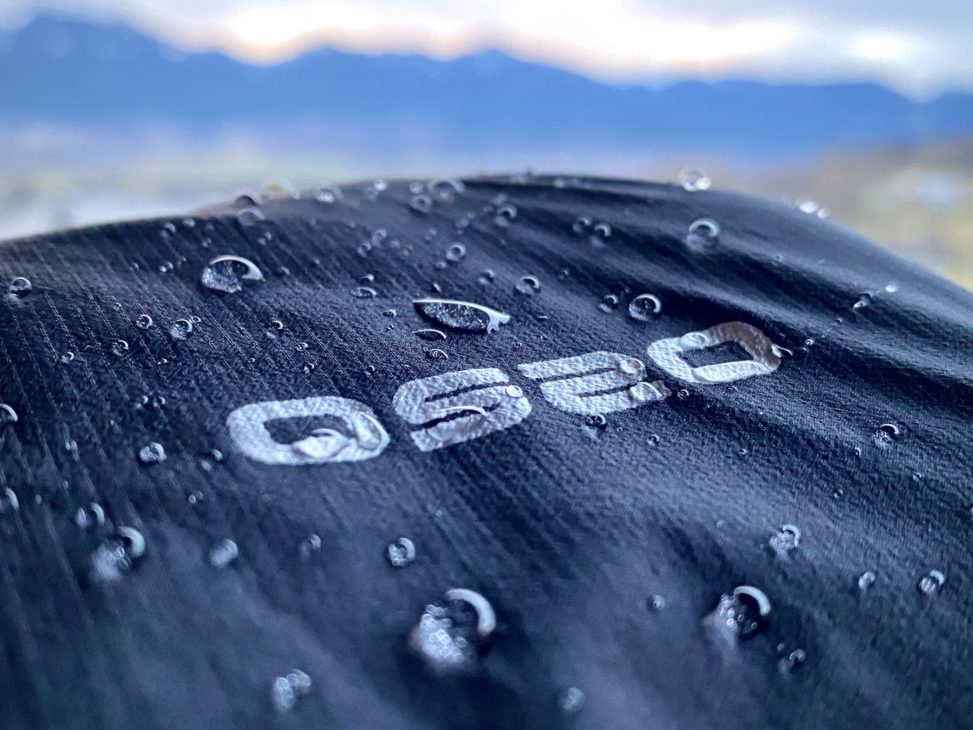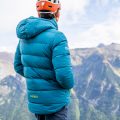By Oswaldo Rivera,
Good care and maintenance of a waterproof and breathable membrane garment is vital to keep its performance like the first day and to extend its lifespan considerably.
How to wash waterproof and breathable garments?
Garments made with waterproof and breathable fabrics such as eVent® and O2 waterproof membrane should be washed regularly.
Please follow these recommendations:
1. It is important to wash the garment often, especially when used after an intense aerobic situation with sweat, or after having been exposed to any chemical substance that could affect its properties.
2. Wash the garment alone or with other breathable waterproof garments. Wash the right side item.
3. Machine wash (never hand wash) in cold water at max. 30ºC.
4. Do not use fabric softeners.
5. Use liquid detergent, avoid powder detergents and never use bleach.
6. To increase the lifespan of the garment and its properties, we recommend the use of specific Nikwax® products.
7. Rinse several times (at least two rinse cycles) if necessary: although it may seem strange, the garment should not smell like soap.
OS2O waterproof and breathable garments have an outer Durable Water Repellent (DWR) treatment that serves as the first shield against water before reaching the membrane. This DWR finish degrades with use, so after a period of time it will need to be reapplied: you will notice that the DWR has lost its effectiveness when water stops slipping on the outside of each garment.

It is important to understand that this does not mean that the garment is no longer waterproof. Waterproofing is provided by the middle layer of the fabric -the membrane– as we explained in the post Undoing a waterproof jacket (in Spanish). Although it may seem otherwise, the fact that the jacket loses its DWR is more related to the loss of breathability than waterproofness, as when the outer fabric gets wet the vapor generated by our aerobic activity will remain stagnant by the outside water layer, even if the membrane continues to function correctly. Therefore, it is important to ensure that the water-repellent treatment is impeccable.
On the other hand, membranes can lose their effectiveness not because of their outer layer but because of direct contact with chemical elements inside them. Substances such as deodorants, make-up, or sun creams seriously contaminate the membrane and can even cause irreversible damage. For this reason, OS2O recommends that you avoid the use of these products when wearing your garment or, at least, avoid direct contact with the inside of your waterproof garment. Pay special attention to hot but rainy days: if you have applied any lotion or sun cream and you are wearing short sleeves, it is possible that it may affect the membrane. Hence the importance of proper washing.
In addition, although mountain garments can be compacted to carry them in your backpack and take up less space, the ideal is to store them at home on a hanger or unfolded as far as possible to avoid suffering both the fabric and the fittings (zips, thermoseals, etc.).
In addition, it is highly recommended to use special detergents that clean the membrane without contaminating it: the one that, according to our tests, gives the best results is the Nikwax® Tech Wash family of technical products.

Occasionally, we´ve seen customers washing garments with any detergent, we have even seen cases where fabric softener is used. This considerably reduces the performance of the membrane and forces treatments that cannot always revitalize the properties of the garment.
The key to garment care: rinsing the garment
Sometimes, after washing, detergent residue remains on the membrane: unlike regular garments, light and delicate garments such as these should be washed with very little soap (it is better to use too little than too much). To check if you have used too much detergent, smell the garment after taking it out of the washing machine and, although it may seem paradoxical, if it smells of soap (however little), rinse the garment again using a short cycle without soap: if you see that when you spin the garment in the washing machine it foams despite not adding detergent, it is because it has not yet been able to expel the soap from the previous wash, so it is necessary to rinse (perhaps several times) the garment. It should not be forgotten that this fabric prevents water droplets from passing through, so it requires special care. And it is VERY IMPORTANT to remember that they should NOT be hand washed: even in cases where they need to be rinsed more than three times, they should always be machine washed: on the one hand, hand washing is not as efficient; on the other hand, excessive rubbing of the inside of the garment can damage the membrane and damage or cause the heat seals to lift. OS2O waterproof garments are designed to be machine washed. Wash the garment alone or with another waterproof breathable garment.

Reapply DWR treatment
Even with poor garment care, the membranes will still maintain maximum water repellency; however, as mentioned above, re-applying the DWR treatment will have a direct effect on the garment’s ability to wick sweat and water vapor away from the inside of the garment to the outside.
There are special products available for re-applying DWR treatment, such as Nikwax® TX.Direct Wash-In, free of perfluorated compounds or PFCs, such as PerFluoroOctanoic Acid (PFOA) or PerFluoroOctane Sulphonate (PFOS).
To apply Nikwax® TX.Direct Wash-In, it is very simple as it is applied directly in the washing machine, although the garment must already be clean. It is not a detergent, but a water-repellent exterior treatment.
Drying instructions:
Leave to air dry (check after a few minutes for any excess product to remove with a damp cloth), avoiding exposing the garment to the sun during the drying process.

The DWR effect will be visible almost immediately, restoring the water-repellent effect and enhancing breathability.
So a membrane jacket that seems to have lost its waterproofing or breathability can regain 100% of its performance with good washing and DWR reapplication practices.






Deja una respuesta